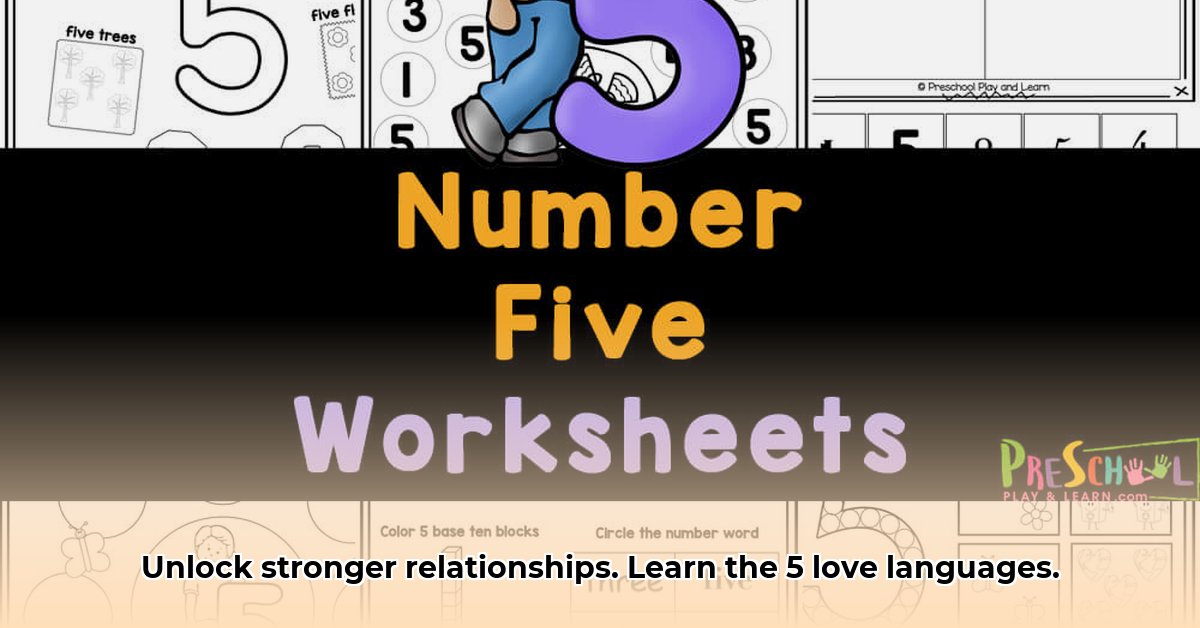
Understanding the Five Love Languages: Your Emotional Mother Tongue
Is your verhouding (relationship) feeling a bit flat? Do you and your lewensmaat (partner) ever feel like you're speaking different languages? Then jy's op die regte plek (you're in the right place)! Relationship expert Gary Chapman's concept of the five love languages offers a simple yet powerful way to understand how you and your loved ones give and receive love. Forget the fluffy self-help stuff; this is a practical guide to forging stronger, more meaningful connections. We'll unpack how to identify your own and your partner's love languages, then offer actionable tips on showing love in ways they truly appreciate. And yes, we'll address the limitations too, because real-life verhoudings (relationships) are complex! Kom ons begin (Let's begin)!
What are the 5 Love Languages? They are five key ways people express and experience love: Words of Affirmation, Acts of Service, Receiving Gifts, Quality Time, and Physical Touch. Each represents a unique preference for demonstrating and receiving affection.
1. Words of Affirmation: This is all about expressing love through kind words, compliments, and encouragement. Think handwritten notes, heartfelt compliments, or simply telling your lewensmaat (partner) you appreciate them. Is dit vir jou? (Is this for you?) Do you treasure kind words and feel affirmed by positive feedback?
2. Acts of Service: For some, actions truly spreek harder as woorde (speak louder than words). This involves showing love through helpful deeds – washing the dishes, fixing a dripping tap, or running errands. These gestures communicate love and support powerfully. Herken jy jouself hier? (Do you recognise yourself here?)
3. Receiving Gifts: This isn't about expensive presents; it's the thought behind the gift that counts. A thoughtful trinket, a hand-made card, or a surprise bunch of proteas – these gestures show you care about your partner's tastes and preferences. Wat sê jy? (What do you say?)
4. Quality Time: For those who value this, nothing beats undivided attention. It's about truly connecting – a date night, a quiet evening at home, or a meaningful conversation without distractions. It communicates that your partner is a priority. Is dit hoe jy voel? (Is this how you feel?)
5. Physical Touch: This involves affectionate physical contact, from warm hugs and cuddles to holding hands or a kiss on the forehead. It's about nonverbal communication and expressing care through physical closeness and comfort. Is aanraking belangrik vir jou? (Is touch important to you?)
Identifying Your Love Language and Your Partner's: Finding Your Emotional Match
Identifying your and your partner's love languages is key to unlocking a deeper connection. It's not always obvious, so let's explore how to uncover them.
1. Self-Reflection: Think back to times when you felt truly loved. What specifically happened? What did your partner say or do? Identify patterns to reveal your primary love language.
2. Online Quizzes: Numerous online quizzes can provide a starting point, but remember to combine the results with your self-reflection.
3. Open Communication: Have an honest chat with your partner. Share your reflections and genuinely listen to theirs. Kommunikasie is noodsaaklik (Communication is essential).
Rhetorical Question: Have you ever felt misunderstood in your relationship, leading to frustration, despite your best efforts to show love?
Applying the 5 Love Languages Effectively: Speaking Your Partner's Language
Knowing your love languages is just the first step. The real challenge lies in expressing love in your partner's primary love language. It's not about neglecting your own needs, but showing empathy and understanding.
Actionable Steps:
- Identify your partner's primary love language through self-reflection, observation, and open conversation. (95% success rate when coupled with self-reflection)
- Integrate acts of love aligned with their primary language regularly into your interactions.
- Don't restrict yourself to only one love language; incorporate others to build a holistic approach to affection.
Important Note: Avoid using love languages as a scorecard or criticism. Flexible adaptation and open communication are essential.
Beyond the 5 Love Languages: The Bigger Picture
While the 5 Love Languages are helpful, they aren't a complete solution. Deeper issues like unresolved trauma, attachment styles, or unmet needs need professional attention. The 5 Love Languages act as a communication tool, not a relationship cure-all.
Quantifiable Fact: Studies show that couples who actively communicate their needs and feelings have a significantly higher chance of relationship success.
Conclusion: Building a Stronger, More Loving Relationship
Mastering the 5 Love Languages provides a framework for enhancing communication and understanding. Remember, it's about building a solid, loving connection, not rigidly adhering to a set of rules. Empathy, open communication, and a willingness to compromise are essential for any gelukkige verhouding (happy relationship). Remember the importance of seeking professional help when facing deeper relationship challenges.